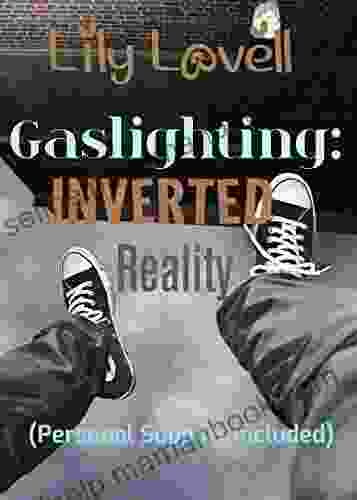Gaslighting: A Distorted Lens on Reality
Gaslighting, a sinister form of manipulation, insidiously distorts reality, leaving victims questioning their own sanity and experiences. Perpetrators of this toxic tactic employ a myriad of subtle and overt techniques to undermine their targets, sowing seeds of self-doubt and eroding their sense of trust.
The term "gaslighting" originated from the 1938 play "Gas Light" by Patrick Hamilton, where a husband manipulates his wife into believing she is losing her mind. This insidious form of emotional abuse aims to control and dominate by distorting reality, undermining the victim's perception of themselves and their environment.
5 out of 5
| Language | : | English |
| File size | : | 967 KB |
| Text-to-Speech | : | Enabled |
| Screen Reader | : | Supported |
| Enhanced typesetting | : | Enabled |
| Word Wise | : | Enabled |
| Print length | : | 15 pages |
| Lending | : | Enabled |
Unveiling the Toxic Dynamics of Gaslighting
Gaslighting thrives in relationships characterized by power imbalances and a lack of open communication. Perpetrators often exhibit narcissistic traits, seeking to maintain a sense of superiority and control over their victims. They employ a range of tactics to undermine and manipulate their targets, including:
- Denial and Minimization: Gaslighters dismiss or downplay the victim's experiences, making them feel like they are overreacting or making things up.
- Projection: Perpetrators blame the victim for their own behavior, accusing them of being too sensitive or irrational.
- Confusion and Isolation: Gaslighters create a sense of confusion and isolation, making the victim question their own reality and alienating them from support systems.
- Intimidation and Threats: Some gaslighters may resort to intimidation or threats to maintain control over the victim.
The effects of gaslighting on the victim can be devastating. Prolonged exposure to this toxic manipulation can lead to diminished self-esteem, anxiety, depression, and even post-traumatic stress disorder. Victims may struggle to trust themselves and others, leading to social isolation and relationship difficulties.
Seeking Support to Break Free
Breaking free from the clutches of gaslighting is no easy feat. Victims often feel isolated, ashamed, and unsure of who to turn to for help. However, reaching out for support is crucial for healing and regaining a sense of self.
If you suspect you are experiencing gaslighting, consider the following steps:
- Trust Your Instincts: Even when the gaslighter tries to convince you that you are crazy, trust your own experiences and feelings.
- Document the Abuse: Keep a journal or record conversations to provide evidence of the gaslighting behavior.
- Seek Professional Help: A therapist or counselor can provide support, validation, and guidance in understanding and coping with gaslighting.
- Connect with Support Groups: Joining support groups can provide a sense of community and connect you with others who have experienced similar situations.
- Set Boundaries: Limit contact with the gaslighter and establish clear boundaries to protect yourself from further manipulation.
Gaslighting is a serious form of emotional abuse that can have profound effects on the victim's well-being. Recognizing the signs and seeking support is essential to breaking free from its toxic influence. By trusting your instincts, documenting the abuse, and reaching out for help, you can reclaim your sense of reality and rebuild a healthy and fulfilling life.


















































































































